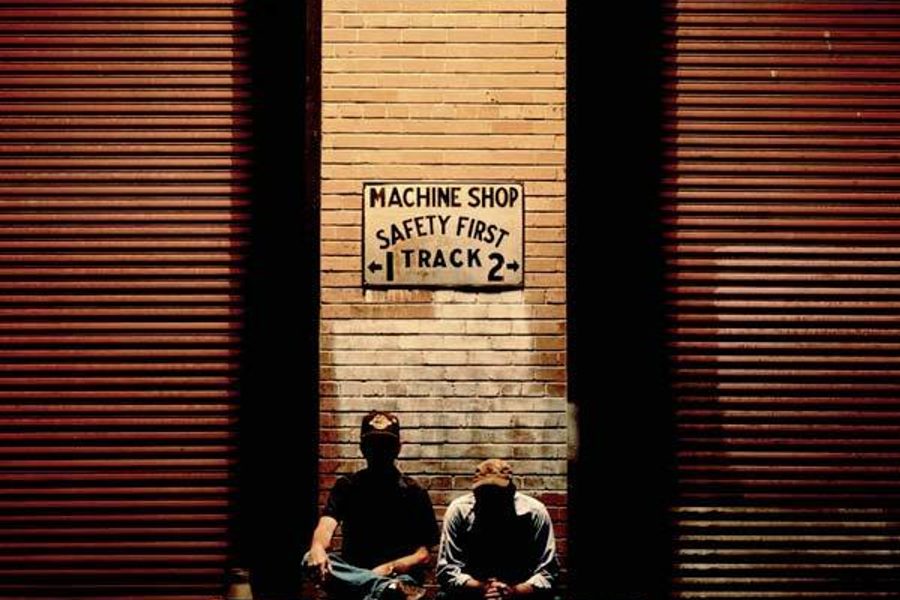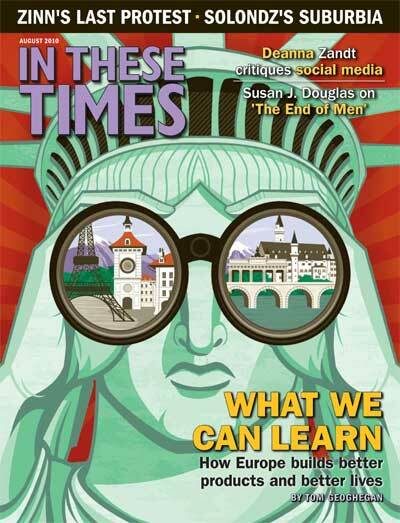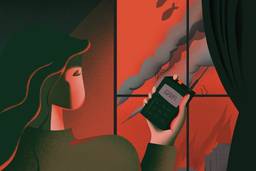Female Rail Tale
Linda Grant Niemann goes beyond clichés to show what it’s really like to work on the railroad.
Mike Matejka

There are borders to our lives – borders of routine, social expectation, gender, race and class. Some never stray near those boundaries, some dance on the edge and a few dare to cross.
Railroad Noir: The American West at the End of the Twentieth Century (University of Indiana Press), by Linda Grant Niemann, is the story of a border crosser. Niemann, a college-educated woman, began working on the railroad in 1979. Middle-class norms clashed with the gritty world of lumbering locomotives, “old head” engineers and rolling freight cars. She learned to negotiate daily survival, work with different crews and “do the best you can.”
“‘Just do the best you can,’ he said, handing me my orders,” Niemann writes of her supervisor. “This was to become a refrain all through my career. An academic in my former life, I believed that you had to know everything before you did anything. In the real world, you just did the best you could.”
She crossed sexual boundaries, identifying as bisexual with lesbian leanings. Immersed in a male clubhouse, she writes of entering a caboose, “Every inch of the wall and ceiling was papered with porn. Everywhere I looked was a huge breast or a vulva. The caboose really belonged in a porn museum. No art installation I had ever seen, Keinholtz and Judy Chicago included, even came close.”
The railroad traverses a boundary land few see. The dispossessed gravitate there, away from probing police and bright lights. Warehouse loading docks and backyards mark the railroad’s intersection with a town, far from the interstate’s fast food and bright lights.
“A railroader knows an entirely different place than the people who live in it,” Niemann writes. “We trespass. We open gates; we go to the loading docks, the junkyards, and the insides of factories and chemical plants. It is an odd feeling of disconnection to cross a street while riding on the end of a freight car. You realize that you are on a different map and that you have no idea of where you are in that neighborhood, in the civilian world.”
Niemann immerses herself in the contradictions of the rail yard – contradictions any worker knows. There is pride in a job well done, a craft mastered, the security of knowing your own body and skill. There is the open road’s freedom, early mornings and late nights in a rumbling locomotive cab, watching wildlife and sunrises over the glistening rail ahead.
Against that freedom is management tyranny. On the railroad, life is supposedly governed by a strict rule book. But every “rail,” which is how railroaders refer to each other, knows nothing would roll if rules were strictly adhered to. Do your job with no accident and no one cares; one mistake and the rule book punishes.
A female rail has to prove herself. Niemann fights not only sexual stereotypes and harassment, but even for a women’s bathroom key. She learned to not only hold her own, but develop the bond that is unionism’s seedbed – the knowledge that not only your job, but your safety depends on the trust and support of the worker beside you.
Niemann found strength navigating a 24/7 job that ran on its own terrain and terms. “The spiritual beauty of the railroad was exiting the freeway on which I assumed things were going to be a certain way, or where I had the luxury of testing limits, onto another road, where long heavy objects were in motion from Maine to California, their trajectory running through every location and enterprise the daytime world engaged in,” she writes. “I knew a thin permeable membrane separated the predictable world from the chaotic one; I crossed it nightly and returned home thankful that home was there.”
Interested in the immigrant Mexicans sneaking freight car rides, Niemann wintered in Mexico, learning Spanish and finding a second home. “Now I looked around me in L.A. and saw the horror that racism and illegal immigration had created. How did the beauty of Mexican rural culture degenerate into gang culture and violence? It had to come from American culture itself, erasing all that was gentle and beautiful in Mexico. Pushed through the sieve of consumerism, the heliotrope colors milked from seashells faded in the ozone light.”
A “boomer” (traveling worker) for many years, Niemann traversed the West, transferring wherever freight was rolling. She worked Amtrak, long-distance freights and yard switching jobs. She endured dismal chemically soaked industrial zones and enjoyed the open western landscape. Rails live by a different clock. After 12 hours of work, they are federally mandated eight hours rest, before the phone calls them back from trackside motels for another potential 12 hours, so their sleep patterns are constantly disrupted.
Niemann’s writer’s eye notes the foibles of fellow workers, management’s whims, and her own doubts and inner battles. She witnessed alcohol’s ravages on rootless workers and fought it herself. Neither breast cancer nor downsizing kept her away from her trade.
Photographs by Joel Jensen illustrate the book – not images of shiny locomotives, but brooding, late-night pictures of trackside thunderstorms, bars, motels and abandoned stations.
When the Southern Pacific Railroad merged into the Union Pacific in 1996, Niemann knew it was time to move on. She used her Ph.D. to get a job teaching nonfiction writing at Kennesaw State University in Georgia.
Most railroad books are pictorial homages to raging locomotives or dry corporate histories. Few are like Railroad Noir. Niemann not only captures working on the railroad, but simply working. She did the “best she could,” learning a craft and how to work with disparate personalities. From the corner of her eye, she watched the toll of downsized crews and corporate power eroding union rights and worker autonomy.
She ends her book with interviews with other workers, particularly younger ones, whom Niemann can now view from an “old head’s” perspective. It’s not often a Ph.D. grabs a locomotive’s handrails for a wild journey, through the West and deep into her soul. Niemann’s words offer an American landscape that captivates as it dances along the rail’s boundary land.





